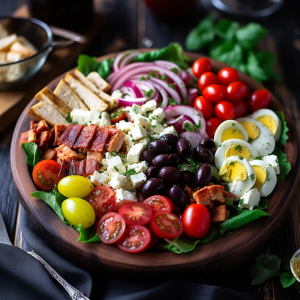Please note that some of the links on this website are affiliate links. I will earn a commission if you decide to make a purchase after clicking through the link. As an Amazon Associate I earn from qualifying purchases.
The Marvel of Onions: A Visual and Sensory Journey
Caption: Different onion varieties showcasing their unique colors.
Introduction
Welcome to our sensory exploration of onions! In this article, we will vividly describe the appearance, texture, and unique characteristics of onions, enabling you to identify them effortlessly. Prepare to immerse yourself in the world of onions without the need for sight!

Visual Description of an Onion
When you encounter an onion, you’ll notice its distinct features that make it easy to identify. The onion typically has:

- Shape: The onion resembles a sphere with a slightly flattened bottom, tapering towards the top.
- Layers: As you run your hands over the onion, you can feel its numerous thin, papery layers tightly wrapping around each other, forming a protective outer shell.

- Color: Onions come in various shades, including white, yellow, red, and even purple. These hues may vary depending on the specific onion variety.
Texture and Feel
As you explore the onion’s texture, you’ll encounter different sensations:

- Outer Layer: Gently touching the onion’s outer layer, you’ll feel the dry, papery texture, often rustling under your fingertips.
- Firmness: When you squeeze the onion gently, you’ll notice its firmness, which helps it retain its shape.
- Smoothness: Despite the dry outer layer, the surface of the onion is relatively smooth to the touch.
Identifying an Onion: FAQ
1. How can I identify an onion based on its smell?
Onions have a distinct, pungent aroma that is easily recognizable. When you hold an onion close to your nose, you will experience a sharp, characteristic odor.
2. What are the common sizes of onions?
Onions can vary in size, ranging from small pearl onions to larger ones that can fit comfortably in the palm of your hand.
3. Are there any specific visual indicators for identifying different onion varieties?
Yes, each onion variety has unique visual characteristics. For example, white onions have a pale ivory color, while red onions exhibit a deep reddish-purple hue.
4. Can the shape of an onion vary?
While the general shape of an onion is spherical, it can have slight variations. Some onions may be more elongated, resembling a tear shape, while others may be more rounded.
5. Do onions have any distinguishing marks or patterns on their outer layer?
Onions typically have a uniform outer layer without any distinct patterns or marks.
6. How can I differentiate between sweet and regular onions?
Sweet onions tend to be larger and have a thinner skin compared to regular onions. They also have a milder flavor and are often labeled as “sweet onions” in stores.
7. Are there any visual cues to identify whether an onion is fresh?
Fresh onions will have a firm texture, vibrant color, and a strong outer layer that is free from cuts or blemishes.
8. Can I identify an onion by its weight?
The weight of an onion can give you a rough idea of its size, with larger onions generally weighing more.
9. Are there any visual similarities between onions and other root vegetables?
While onions
belong to the same family as garlic, shallots, and leeks, they have distinct visual characteristics that set them apart. Onions have a spherical shape, papery outer layers, and a distinct odor that helps differentiate them from other root vegetables.
10. Can you identify an onion by touch alone?
Yes, with practice, you can identify an onion solely by touch. The combination of its spherical shape, papery layers, and firmness make it easily distinguishable from other vegetables.
Now that you have embarked on this sensory journey, you can confidently identify onions by their appearance and texture. Enjoy the wonderful world of onions in your culinary adventures!












